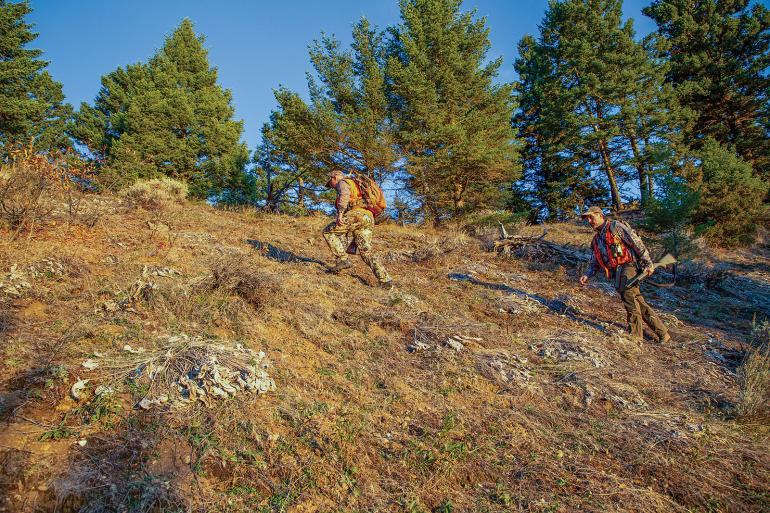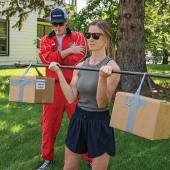Lean & Mean
Hunter’s safety—for the body.
With hunting season upon us, it’s time to make sure you’re prepared. Beyond just sighting in your weapons and getting your gear in check, it’s important to ensure that your body is tuned up and ready to go as well. A steady workout routine leading into the season can go a long way toward not just limiting injuries, but also making the pack-out with fresh meat a lot easier.
Our legs and backs are the big workhorses during hunting season, so it is important to strengthen both areas to limit the stress on our joints while carrying packs or meat up and down mountains. Heavy lifting (with good form) such as deadlifts and squats can go a long way to accomplishing just that. Step-ups with weights in a rack are also a fantastic way to build strong muscles for handling steep inclines, while at the same time building trunk strength for slinging meat on your back.
While it’s ideal to begin a month or two before the season, it’s not essential. Like any intense exercise, take enough recovery time so your body can rebuild.
Core strength and trunk mobility are also essential to preventing joint overuse injuries during hunting season. Rotational stretches such as “threading the needle” while on your hands and knees can help you practice for the more awkward positions you may find yourself in as you line up a shot. Bird-dog rows can also help with stability. If you are planning on bow hunting, then work on shoulder strength as well, as nothing ruins a good shot like a tweaked shoulder. Practice holding your bow at full draw or work up to it with a thick resistance band.
Another excellent way to prepare for the season is simply getting into the mountains and doing some scouting. Not only will this give you a better understanding of where the big game might be, but it will also help you identify potential environmental obstacles to train for (i.e., boulder fields, blowdown, or cliffy scrambling). Throw on a pack with some heavy gear or weights in it, and you’ll be well ahead of the game.
While all of the above exercises are great on their own, the best way to reduce joint irritation is by committing to a steady program two to three times per week. While it’s ideal to begin a month or two before the season, it’s not essential. Like any intense exercise, take enough recovery time so your body can rebuild. Nothing beats a celebratory burger, beers, and a dip in the hot springs—either after a hard training session or a successful hunt.
Daniel Schiedermayer is a Doctor of Physical Therapy (DPT) at Excel PT. He’s a board-certified orthopedic specialist who works with a wide variety of athletes as well as patients with spinal and jaw pain. When not in clinic, he enjoys camping, hunting, weightlifting, and getting active outdoors with his wife and three kids.












